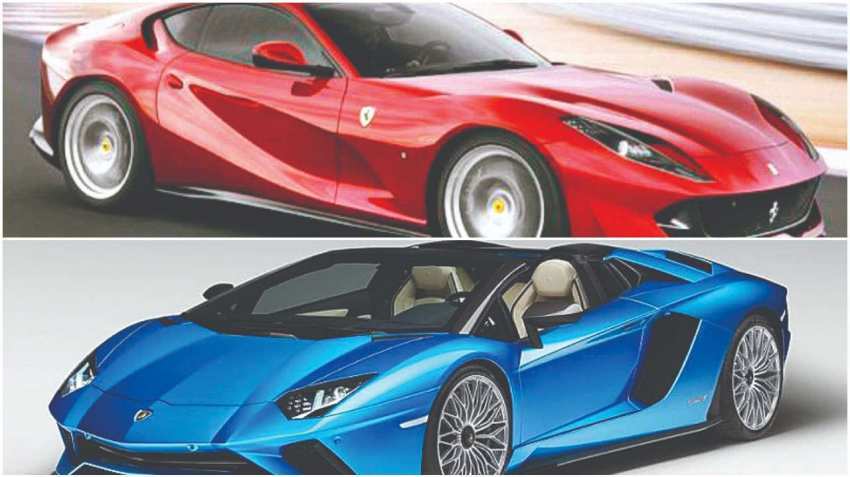'Taxes on taxes on taxes': Lamborghini says super luxury cars cost over 3 times actual price in India
Lamborghini, the Italian luxury super car maker, has met its India sales target for till the first half of next year. Yet, Matteo Ortenzi, who recently took over as CEO of Asia Pacific region, is worried. It is frequently changing taxation policies that could prove as a dampener in the execution of his plan to double India sales in the next two years.

Lamborghini, the Italian luxury super car maker, has met its India sales target for till the first half of next year. Yet, Matteo Ortenzi, who recently took over as CEO of Asia Pacific region, is worried. It is frequently changing taxation policies that could prove as a dampener in the execution of his plan to double India sales in the next two years.
Ortenzi says high taxes in India are not letting the market expand and frequent policy changes making the prospective customers wait for the purchase even as he agrees that taxes are bound to be high on a luxury brand.
Lamborghini, which has over 40% market share in the niche segment, had clocked 26 unit sales in 2017.
As per the back-of-the-envelope calculations, a customer in India wanting to drive a super luxury car like Lamborghini has to shell out 158% on duties and taxes.
Further, addition of transportation and dealer charges, insurance and registration, etc, takes the final price 3.4 times of the actual price, the company executives said. The company which has Huracan and Aventador models in its portfolio recently introduced its latest SUV Urus in India starting at Rs 3.1 crore.
Lamborghini’s India head Sharad Agarwal described the high taxes as “taxes on taxes on taxes”.
Similarly, rival Ferrari which sells over 20 units annually in India launched its Portofino car in the country last month selling it at a price starting from Rs 3.5 crore. The car costs less than Rs 1.59 crore in the US.
Luxury brands such as Aston Martin, Ferrari, Porsche declined to comment for the story. An executive from one of the companies said that they have taken up the issue of high taxes and frequent changes in the policy with the authorities at every available platform and will continue to do so.
According to the industry insiders, luxury cars and bikes are considered to be an easy source of revenue generation for the government and levying taxes on it has been happening for long. Further, the government officials claim that it is done to protect the local industry. However, the reasoning has often been questioned.
US President Donald Trump recently even called India as the “tariff king” over the huge levies on American iconic luxury cruiser bike Harley Davidson.
Experts claim that the most recent changes happened last year in July post goods and services tax (GST) implementation, when luxury vehicles attracted base rate of 28% with 15% cess. Later, in September cess on large cars was hiked 5%, taking the total GST incidence to 48%, while that on SUVs was increased 7% to 50%.
Finance minister Arun Jaitley increased custom duty on CKD (completely knocked down) imports of motor vehicles, motor cars, motorcycles from 10 % to 15% in the Union Budget for 2018-19.
Also, custom duties were doubled on certain spare parts, accessories to 15%. As a result, the car makers had no option but to pass on the hike to the customers, making cars more expensive by up to Rs 10 lakh or even more, the experts said.
Source: DNA Money
10:00 AM IST






 Planning to buy pre-owned luxury car? It's now just a click away - Big Boy Toyz ventures into e-booking
Planning to buy pre-owned luxury car? It's now just a click away - Big Boy Toyz ventures into e-booking Road to buy cars priced above Rs 10 lakh just got smoother! Check big money-saving good news for you
Road to buy cars priced above Rs 10 lakh just got smoother! Check big money-saving good news for you Lamborghini okay with high taxes on luxury cars in India, but wants this also
Lamborghini okay with high taxes on luxury cars in India, but wants this also BMW hits 2017 sales record but Mercedes keeps lead
BMW hits 2017 sales record but Mercedes keeps lead Mercedes Benz to launch A-Class in US market soon
Mercedes Benz to launch A-Class in US market soon